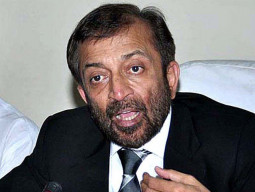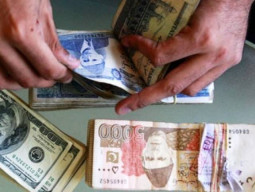
There are two Sindhs — one make- believe and another real. Those that live in the make believe Sindh seem to be trying in vain to acquire an identity different from those in the real Sindh. And the rivalry between the two is not helping the cause and the interest of the province.
All those whose ancestors had migrated from India during partition leaving their birthplaces for good and settled in Sindh cannot be identified as anything but Sindhis. The ‘Mohajir’ tag does not truly represent the third-generation offspring of those early Sindh settlers. Secondly, with over 70 years having elapsed since, the current generation of their children’s children cannot even be called new Sindhis. They are now as much ‘old’ Sindhis as those who take pride in being sons of the soil. They are as much sons of the soil as those that had inhabited Sindh since even before partition.
Now let us take the issue of Urdu language that some elements claim sets them apart from those whose mother tongue is Sindhi. First, Urdu was not the mother tongue of all those who came to Pakistan after partition. Most perhaps had come from the so-called Urdu-belt which now has disappeared even in post-partition India. However, a substantial number coming from provinces where languages other than Urdu were spoken learnt it after coming over to Pakistan.
More ironically, Urdu is not the mother tongue of any of the sub-nationalities that have inhabited for centuries the land known now as Pakistan. Those who take pride in Urdu being their mother tongue should be thankful to those Pakistanis who had accepted it as the national language despite it not being their mother tongue. In return no other province had even asked that their mother tongue be made their respective provincial language except the people of East Pakistan and those belonging to Sindh. They were justified because both the languages, Bangla and Sindhi, are living languages with their own rich respective cultures and literature in prose, poetry, fiction and non-fiction. It was the language movement of the early 1950s that had actually sown the seeds of separation of East Pakistan from the West.
Those whose mother tongue is Sindhi are learning the Urdu language because it is the national language and that too without any reservations. So, why should the new Sindhis who are no more that new claim their mother tongue to be Urdu and begrudge Bhutto for saving the country from another destructive language movement by taking the right decision at the right time?
And now the question of the quota system. Pakistan had introduced the quota system in civil services in 1948. East Bengal, which accounted for 56.75% of the population, got a share of 42% in services which added to their grievances against the central government. Similarly, Karachi with a population of around one million in 1951 got a mere 2% share and 15% share for migrants. Punjab was allocated 24% quota against 28% population and all other provinces, including the former princely states got 17% quota against 13.75% population. This quota policy was revised in November 1949 introducing a merit quota of 20%.The 1956 Constitution extended the quota system of 1949 by 15 years (Article 17) and the 1962 Constitution retained this provision (Article 8) up to 1972.
General Yahya Khan had extended the quota system according to which the rural and urban population in Sindh was given 60% and 40% representation in services on the recommendations of the then martial law administrator of Sindh. The 1973 Constitution merely protected the already prevalent quota system and rationalised it while merging Karachi’s quota with urban Sindh. So, it is wrong to blame Bhutto for what he merely rationalised. (Source: Quota system in Pakistan by Wajid Rana published in ET on November 9, 2017)
Forty-five years should be more than enough to bridge the development gap between the two zones. So, why not do away with Sindh’s current quota system now so that the make-believe province disappears for good?
Published in The Express Tribune, May 26th, 2018.
Like Opinion & Editorial on Facebook, follow @ETOpEd on Twitter to receive all updates on all our daily pieces.
















































COMMENTS
Comments are moderated and generally will be posted if they are on-topic and not abusive.
For more information, please see our Comments FAQ